mail@toyota-club.net
© Toyota-Club.Net
Jan 2016 - Jul 2018
Briefly consider the principle of the variable discharge oil pump, used in some modern Toyota engines.
Type 1 - ZR and AR series.
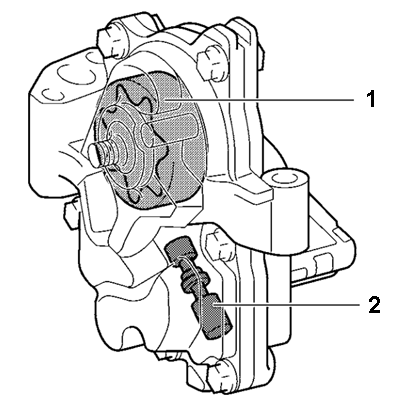
|
|
1 - pump 2 - relief valve. |
Standard pump gives a linear dependence between the speed and flow volume/pressure at throughout the all range, but at the medium speed area engine does not need the intensive growth of oil pressure.
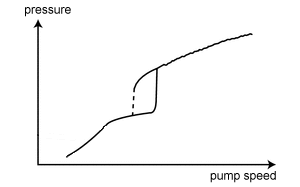
|
Some automakers use really variable displacement pumps, which mechanically changes the position of the rotor, or pumps with electronically controlled valves.
In case of Toyota (or Aisin Seiki) "variable discharge" is provided by the easiest way - by dumping of "excess" oil supply using advanced mechanical relief valve. The pump pressure is fully realized at low speeds, whereas at medium to high is regulated by valve. The result - little fuel economy (about 1-2%).
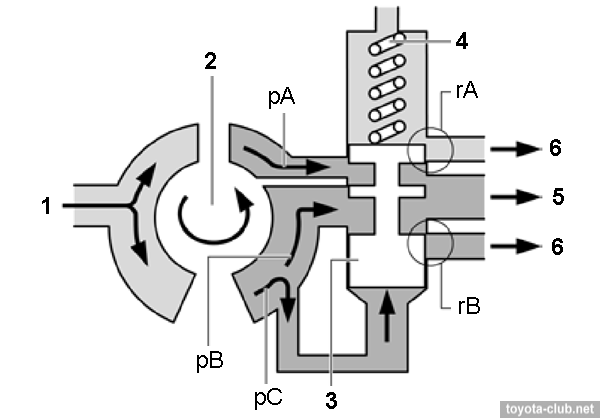
|
|
1 - from oil strainer, 2 - gear pump, 3 - relief valve, 4 - valve spring, 5 - to engine, 6 - drain (to pump inlet). pA, pB, pC - oil channels. rA, rB, rC - drain ports. |
• Low speed. While the pump speed and the oil pressure are small, ports A and B are closed, and all the oil from channels A and B is supplied to the engine. At this area the pressure is directly proportional to pump speed.
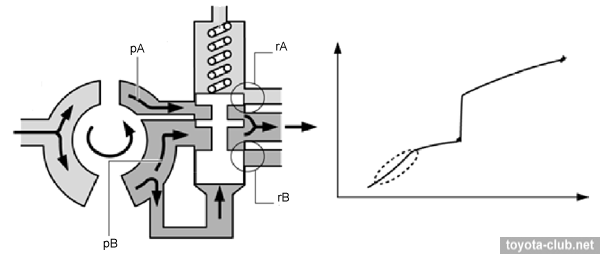
|
• Average speed. Growing oil pressure at a certain point overcomes spring force and raises the valve. Drain port A opens, and oil from the channel A bypassed back to the inlet of the pump. Thus, the oil supply volume is regulated, the dependence between the pump speed and presure varies significantly.
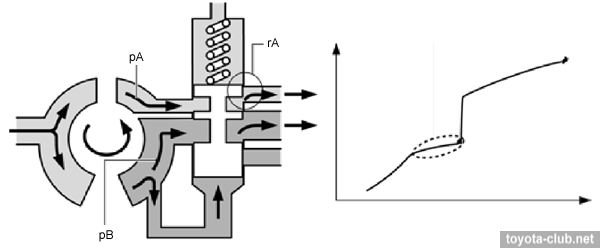
|
• High speed (acceleration). With increasing speed, oil pressure, though slow, but growing, and eventually moves the relief valve. Drain port A is blocked, and the oil from channels A and B again flows to the engine. Supply is growing sharply, increasing the pressure in the system.
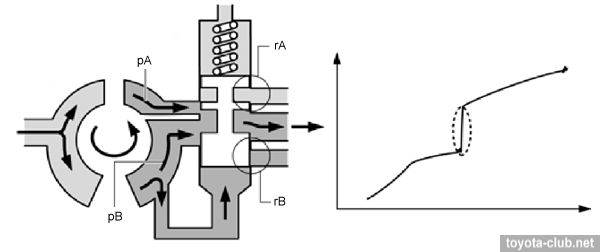
|
• High speed (adjusting). Further, relief valve begins to slightly open the drain port B, which through the oil from channel C drains. The dependence between pump speed and pressure changes again.
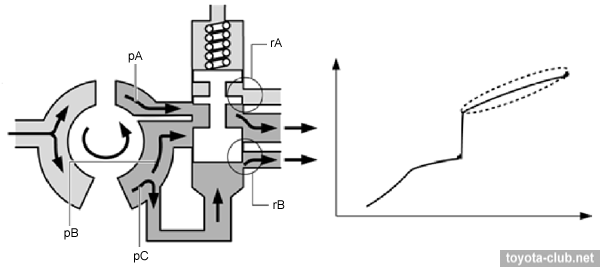
|
• High to medium speed. When speed falls all the oil from channel A flows into the engine. The pressure at the pump outlet is reduced gradually, and while the drain port A remain opened by relief valve, part of the oil from channel A returns to the pump inlet. As a result, torque fluctuations are absorbed in the pump, and engine speed drop is more smooth.

|
Type 2 - Dynamic Force (A25A, M20A).
The trochoidal pump is driven by an additional short chain. The ECM controls operation of the pump via oil pressure control valve, depending on the engine temperature, speed and other parameters.
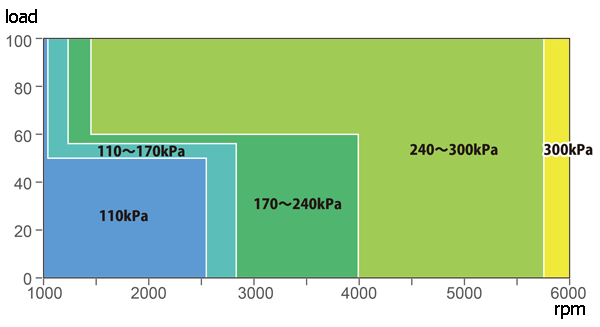 |
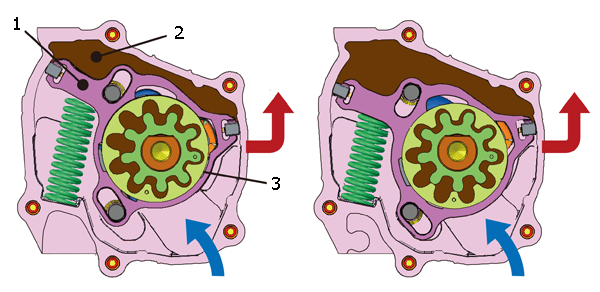 |
|
1 - regulator, 2 - control chamber, 3 - rotor
|
Under the action of pressure in the control chamber, a regulator moves and changes the mutual position of the internal and external rotors, thereby achieving a smooth change of the oil charge volume.
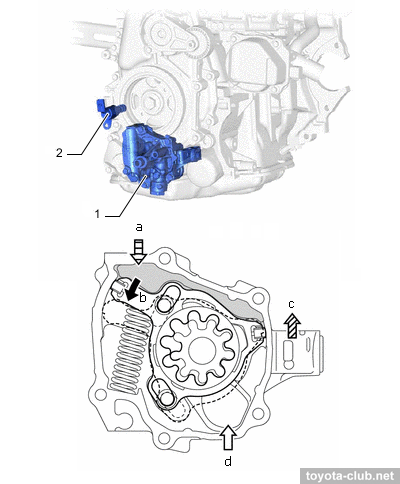 |
|
1 - oil pump, 2 - oil pressure control valve. a - from oil pressure control valve, b - regulator movement, c - to oil system, d - from oil strainer. |
Toyota engines review
·
AZ ·
MZ ·
NZ ·
ZZ ·
AR ·
GR ·
KR ·
NR ·
ZR ·
AD ·
GD ·
A25.M20 ·
G16 ·
M15 ·
V35 ·
